
Hawaii is a state that includes 137 islands in the Pacific Ocean. The islands span over 1,500 miles and are popular tourist attractions. With active volcanoes, stunning views, and crystal clear water, it’s no wonder why nearly 10 million people visit the beautiful islands every year. However, is Hawaii safe? Looking into Hawaii’s crime rate will help tourists and residents better understand how to stay safe in paradise.

How Is the Crime Rate of a State Recorded?
Crime rates are reported yearly by the FBI Uniform Crime Reporting Statistics. Crime statistics are created by comparing the number of crimes per 100,000 inhabitants. Even if the population of a city is lower than 100,000, the crime rate will be fractioned to fit the standard ratio; this makes crime rate statistics uniform and easier to compare. Only reported crimes are included within the FBI’s estimations of a city’s crime rate.
There are two main crimes that are included within the crime rate: property crime and violent crime. Property crime includes burglary, larceny, theft, motor vehicle theft, arson, shoplifting, and vandalism. Violent crime includes murder, aggravated assault, manslaughter, sexual assault, rape, robbery, and kidnapping.
The national violent crime rate is 382.9 per 100,000, and the national property crime rate is 2,362.2 per 100,000. The national crime rate is used as a baseline to determine the safety of other areas. If a city has a crime rate that is lower than the national average, the city is considered relatively safe. On the other hand, if a city’s crime rate is higher than the national average, the city is considered dangerous.
To find the crime rate of an area, the total number of crimes reported is divided by the total population. The total population includes military members and other residents, and does not include visitors. The resulting number (after dividing) is multiplied by 100,000. The final product is the crime rate per 100,000 people. Cities that attract tourists have a higher crime rate due to the high number of visitors who are included in the crime number but are not included in the population number.

Violent Crime in Hawaii
Hawaii is the fourth most visited state in the United States. However, considering the high number of visitors to the state, the violent crime rate in Hawaii is relatively low. With 249 violent crimes per 100,000 inhabitants, the Hawaii violent crime rate is lower than the national average. The murder rate in Hawaii is 2.5 per 100,000 inhabitants, which is half the rate of the national average—the national average murder rate is 5 per 100,000.
Hawaii is surprisingly safe, in terms of violent crime. Violence in Hawaii is extremely rare. Many attribute this to Hawaii’s culture—the people are friendly and welcoming toward strangers.
Although Hawaii has lower average violent crime rates, some crimes, such as rape, are more common. In Hawaii, there are 44 rapes per 100,000 inhabitants, while the national average is 42.6 per 100,000. On the other hand, assault rates are significantly lower than the national average. Hawaii’s aggravated assault rate is 135.5 per 100,000 people, while the national average is 246.8 per 100,000.
According to the US Bureau of Justice Statistics, Hawaii does have a substantial number of law enforcement stations across the islands. There are seven police stations, employing over 3,500 police officers. This means that there are over 250 police for every 100,000 residents. In Honolulu alone, the largest city in Hawaii, there are over 2,000 police officers. Officers are careful about making obvious arrests in tourist-populated areas. Officers want tourists to feel safe and tend to make police arrests away from populated locations. Police on the islands work to prevent crime in the tourist areas and ensure the safety of the Hawaiian citizens.
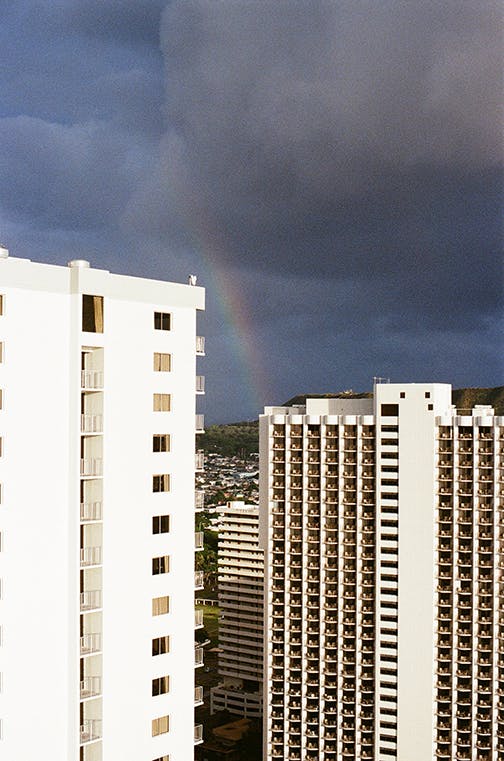
Property Crime in Hawaii
Although violent crime is rare in Hawaii, property crime is common. With millions of tourists visiting every year, some residents may be tempted to break into a car and steal the tourist’s wallets. In Hawaii, there is a 1 in 35 chance that you will be a victim of property crime. The property crime rate in Hawaii is 2,870 per 100,000, while the national property crime rate is 2,362.2. The unemployment rate in Hawaii is 2.7 percent, which, though lower than the national average, is a main factor in property crime rates.
Hawaii has high rates of burglary, theft, and vehicle theft. Burglary rates are 396.4 per 100,000 (while the national average is 276.0). Theft rates are also higher than the national average at 2,076.2 per 100,000 compared to 1,594.6 per 100,000. Additionally, vehicle theft is high in Hawaii, with 397.7 per 100,000 compared to the national average of 228.9 per 100,000.
Property crimes in Hawaii are higher than the national average, meaning that visitors and residents of Hawaii need to be careful with their cars and homes. Installing a home security system can help to protect homes from being burglarized.

Is Hawaii Safe?
Hawaii is safe in terms of violent crime. However, this should not mean that tourists and residents should let their guards down. Hawaii does have high instances of drug abuse, one of the main factors in the increasing theft crime rate. Some of the most dangerous areas in Hawaii should be avoided at night in order to avoid the majority of crimes. For your safety, here are the five most dangerous cities in Hawaii:
1. Nanakuli
Nanakuli is the first city tourists drive through while traveling up Oahu’s leeward coast. The city is beautiful, with a full beach and warm water (though it can get rough during the winter months). Nanakuli sees low rates of violent crime and reports 10 percent less violent crime than the national average. However, the town reports higher rates of property crime. The property crime rate in Nanakuli is 3,928 property crimes per 100,000 people, which is 79 percent higher than the national average.
2. Hawaiian Paradise Park
Hawaiian Paradise Park is the second most dangerous city in Hawaii. The city is known for its beautiful beaches and breathtaking scenery. However, this area might not be the safest. Those living in Hawaiian Paradise Park should be wary at night and should keep an eye on their belongings while at the parks. Hawaiian Paradise Park has a violent crime rate that is 11 percent lower than the national average. The property crime rate in Hawaiian Paradise Park is 78 percent higher than the national average, with a specific crime rate of 3,907 property crimes per 100,000 people.
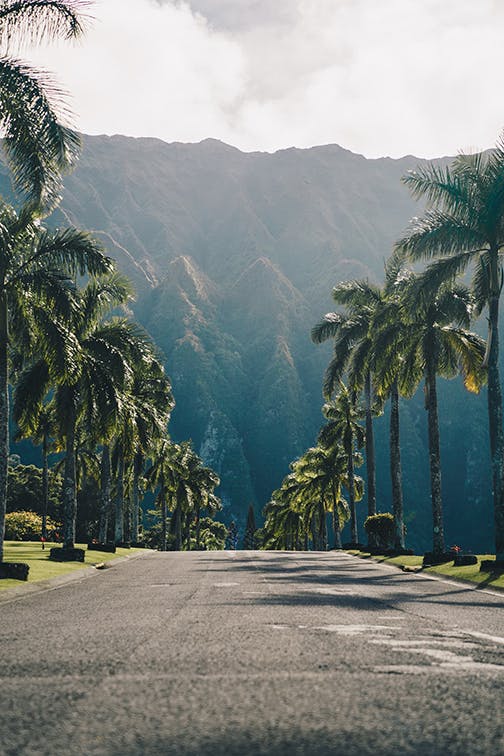
3. Waianae
Waianae is the second most dangerous city in Hawaii. Similar to other Hawaiin cities, the violent crime rate is lower than the national average. A person in Waianae is 12 percent less likely to experience violent crime than the national average. The property crime rate in Waianae is 75 percent higher than the national average. There are 3,839 property crimes per 100,000 people in this beautiful city. The most common property crimes here are theft and burglary. Luckily, by staying away from unknown areas at night and by installing a security system, those living in Waianae can avoid property crime instances. The high crime rate of Waianae is often attributed to the high unemployment rate of 14.6 percent.
4. Makaha
Makaha is the fourth most dangerous city in Hawaii. The city has a violent crime rate of 295 per 100,000, which is 23 percent lower than the national average. The property crime rate is 3,397 property crimes per 100,000 people. The property crime rate is 54 percent higher than the national average. The unemployment rate in Makaha is also the highest in the state, with 16.7 percent. The main reason why Makaha is so dangerous is drugs. Drugs are common in many cities and towns in Hawaii. Due to the commonness of drugs, residents and tourists need to be careful at night.
5. Maili
Maili is the fifth most dangerous place to be after dark in Hawaii. Maili has a crime rate of 290 violent crimes per 100,000 people and 3,344 property crimes per 100,000 people. The violent crime rate in Maili is 24 percent lower than the national average. However, the property crime rate is 52 percent higher than the national average. While in Maili, the chances of becoming a victim of violent crime are low. While living in or visiting Maili, a person has a 1 in 27 chance of becoming a victim of property crime.
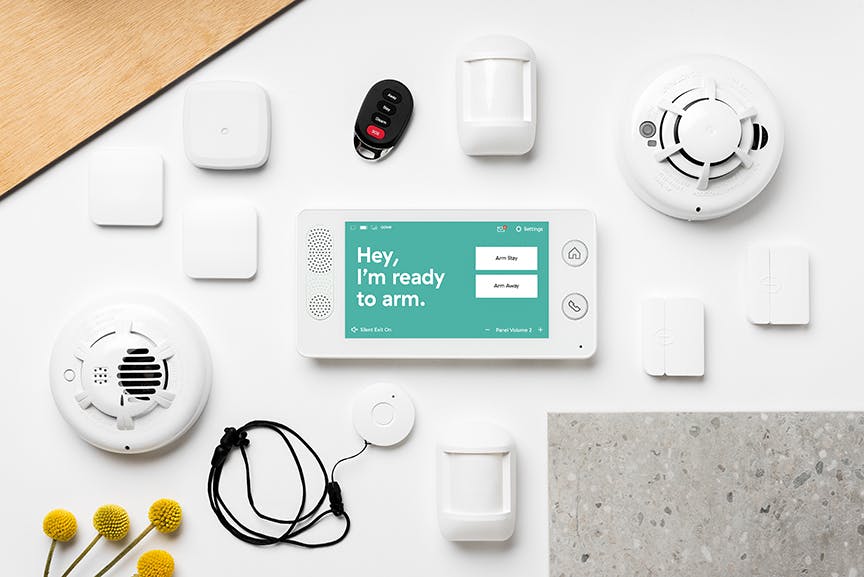
How to be Safe in Hawaii as a Resident
As a resident of Hawaii, there are several things that you should do in order to stay safe and protected. Although Hawaii isn’t the most dangerous state, it’s still important to ensure that your property is secure. Property crimes in Hawaii are fairly common, meaning that homeowners and renters need to ensure that they’ve taken the proper measures to protect their property.
Here are five ways to protect your home as a resident of Hawaii:
1. Install a Home Security System
One of the best ways you can protect your home from property crime is by installing a home security system. Home security systems are specifically designed to protect houses from being targeted by burglars. They come fully equipped with door sensors, window alarms, indoor and outdoor security cameras, motion sensors, and more. Each feature has been proven to deter burglars at every stage of the process.
Door sensors prevent burglars from getting through the front door (nearly half of burglars enter the home through the front door), and window alarms prevent burglars from entering the home through a window (one-fourth of burglars enter through the window). While door and window sensors protect the home, security cameras collect important information that will help homeowners catch the burglars. Some cameras, such as our Cove indoor camera, use two-way audio, allowing homeowners to connect their smart security devices to their phones. Then, using the phone, homeowners can watch and listen to live footage from the cameras. This puts the homeowner in charge of the scenario. Home security systems are the number one way to protect your home.
2. Install Reinforced Windows
Reinforced windows prevent burglary, protect your home, and ensure safety for your family. There are two main types of reinforced windows: internal and external reinforcement. Internal reinforcement is when the window itself is replaced with hurricane-proof glass. Hurricane-proof glass is bulletproof, smash-proof, and can withstand extreme force. This type of glass is meant to remain intact during the worst tropical storms. Of course, while living in Hawaii, it’s a good idea to protect your home against potential tropical storms.
Tropical storms rarely hit Hawaii, due to the small size of Hawaii’s islands. Still, having weather-proof windows can be extremely beneficial. Because the windows are meant to withstand category five hurricanes with winds over 156 miles per hour, the windows can easily withstand a burglar attempting to smash the glass. The glass ensures that burglars can’t enter the house, making your home extremely safe.
The second type of window reinforcement that can be used to protect your windows is a window bar. A window bar is a small steel bar that is installed on the outside of the window. The bars are placed close enough together that a person can’t stick their arm through the bars. This means that burglars won’t be able to break the window, let alone climb inside the window.

3. Lock Your Doors
According to a study done by The University of North Carolina at Charlotte, 34 percent of burglars are able to break into a home by walking through the unlocked front door. Many of the crimes reported in Hawaii have happened because the property owner never locked the door. It’s easy to forget to lock the door when you’re living in paradise. However, homeowners should be more aware of their homes and ensure that locking their doors is a priority. One easy way to make sure that you’ve locked your doors (even after you’ve left the house) is by installing smart locks on your doors.
Smart locks are a home security feature that can be added to your already existing home security system. A smart lock is a device that can be connected wirelessly to your phone. You can lock the door from the smart lock app and unlock the door remotely if needed. This helps you to better monitor your front door by allowing you to have a better eye on the door. However, since the cost of living in Hawaii is already fairly expensive, installing a smart lock might not be the best idea for your wallet.
Instead of using a smart lock, you can simply leave a sticky note by the door to remind yourself to lock the doors. Locking your doors can prevent a majority of burglaries and ensure that your home is safer than ever.
4. Lock Your Windows
You may have the strongest window glass in existence; however, if you don’t lock your windows, a burglar will be able to open the window and slide inside. Since one-fourth of burglars will enter a home through the windows, it’s important to remember to close and lock your windows before you leave the house.
Many Hawaiian homeowners may be tempted to leave their windows open as they leave the house. The temperature in Hawaii is blissful, and there is always a warm ocean breeze. However, leaving your windows open can leave your home susceptible to burglaries and break-ins. To be safe, homeowners should always lock their windows (especially since you never know when it is going to rain in Hawaii).
5. Install Outdoor Lighting
Although only one out of six burglaries happen at night, it’s still important to protect against nighttime crimes. Nighttime crime is just as dangerous as daytime crime. In addition to installing security cameras with night vision, homeowners should install outdoor lighting. Outdoor lighting allows homeowners to see more of their backyard, making it easier to see shapes and detect movement.
However, outdoor lighting should be used carefully. Several studies have shown that unshielded outdoor lights can actually decrease the effectiveness of security systems because the unshielded lights blind night-vision cameras. Because of this, outdoor lights should be installed carefully to prevent the light from interfering with your outdoor security.
A study conducted by the Mayor’s Office of Criminal Justice in New York City found that strategic outdoor lighting can actually reduce crime rates by 39 percent. The study took place over six months and monitored 80 different public housing developments. Half of the developments were given new, strategically placed lighting (street lights, porch lights, etc.) while the other half remained in the dark. At the end of the six months, the study found that the areas with new lighting saw a drastic drop in reported crimes, indicating that light may have a serious effect on crime rates.
Light should never be the main source of a home’s protection. Attempting to use only outdoor lighting as your form of home security will leave your home open to burglary. Instead, combine effective outdoor lighting with your indoor security system.
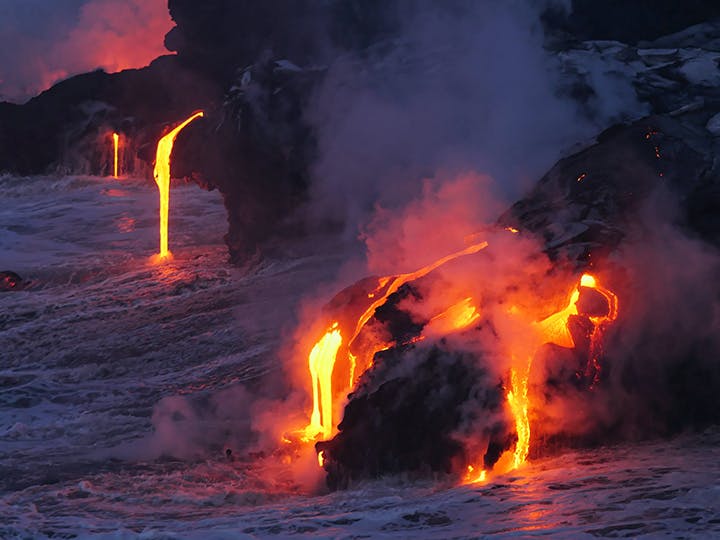
How to be Safe in Hawaii as a Tourist
With nearly 10 million people visiting Hawaii every year, it’s important for visitors to learn how they can protect themselves from violent crime and property crime while they enjoy their blissful vacation. As we mentioned earlier, Hawaii does not experience abnormally high levels of reported crime and incidents. If anything, Hawaii is a very average state in terms of crime; Hawaii is neither high nor low. However, just because Hawaii does not experience a high level of reported crime does not mean that tourists should be caseless when they visit the island state.
Here are five ways to stay safe in Hawaii as a tourist:
1. Avoid Showing Off Wealth
When you’re traveling to a tourist location, whether or not you’re wealthy, locals will automatically perceive you as wealthy. Because you are already given this perception, it’s important not to reinforce their views. To avoid appearing wealthy, do not wear expensive jewelry, watches, or carry heavy bags. If you need to rent a car in Hawaii, rent a modest car that will get you from one area to another, rather than renting something flashy. You should always carry a fake wallet with a small amount of cash inside to give to thieves if you are ever mugged.
2. Avoid Sticking Out
As a tourist, you will always stick out in a crowd of Hawaii residents. However, there are things you can do to avoid being the first one that a pickpocket targets in a crowd. Pickpockets look for obvious targets who can be easily spotted in a crowd. Typically, victims of pickpockets are wearing bright clothes and are standing or walking through crowded areas. People wearing bright clothes are easier to spot and follow in crowds since the clothes make them stand out. Instead, try to wear muted colors on vacation.
You should also bring bags that have security zippers and hidden pockets to thwart pickpockets. These bags are sold on Amazon and are fairly inexpensive. The purpose of a theft-proof bag is to secure your phone, wallet, and other valuables while traveling by preventing pickpockets from stealing the items while you’re distracted.
3. Research Hawaii
To stay safe while visiting Hawaii, you need to research the safest and most dangerous areas and islands. Of course, no matter where you are, you need to stay alert. However, there are some areas where you should be on your guard more than ever. The five most dangerous cities in Hawaii are known for excessive drug use and theft. Areas with high drug use are the most dangerous while you are on vacation because drug addicts need hundreds of dollars a day to support their drug addiction. When a drug addict sees a tourist, the tourist becomes the number one target (because they know the tourist will have money).
Learning the culture of an area can also help keep you safe. Many cities and cultures have different expectations. If you visit an area and you are ignorant of the culture’s expectations, it could lead you into a dangerous scenario.
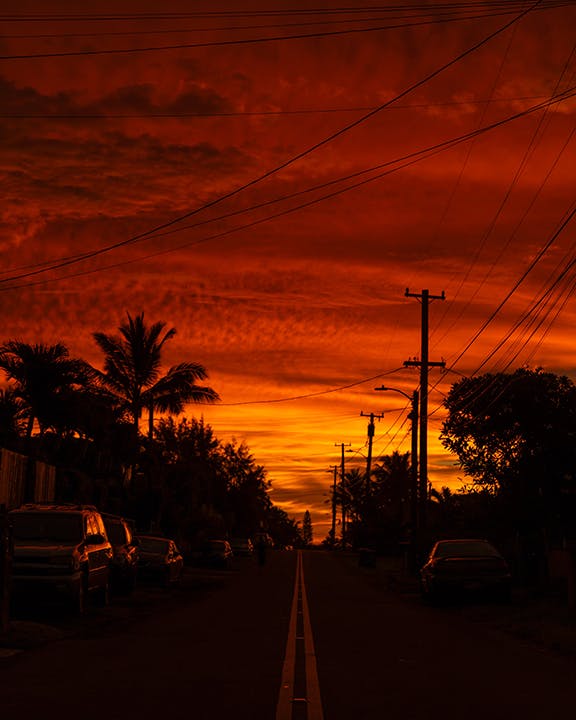
4. Don’t Stay Out After Dark
One mistake that tourists make all over the world is staying out after dark. Tourists want to experience “nightlife.” During nighttime in Hawaii, there are less petty crimes, but more violent crimes. It’s more likely that you will become a victim of violent crime while you are out at night, especially if you are in the city.
If you need to go out at night, always travel in a group. Groups larger than three are your best protection at night. Victims who are targeted at night are often walking on their own or with a very small group of people (a group of two or three people). The chances that you will be a victim of violent crime will increase as the sun goes down. The crimes that are most common at night are aggravated assault, rape, and homicide. To stay safe from violence, always carry pepper spray and travel in a group.
5. Protect Your Valuables in Your Room
Many of our tips have focused on keeping your personal belongings safe as they travel on your person. However, items left in your hotel or Airbnb are also at risk. Although many hotels are safe and have employees who can be trusted, there are some hotels whose staff may not be the most trustworthy. Because of this, it’s important that you bring safety measures with you to protect your valuables.
If you are staying at a hotel, you should put your valuable items in a locked box. Putting valuables in a locked box can prevent curious room keepers from rummaging through your items and taking a few bracelets. Most of the time, when an item is stolen from your room, the thief hopes that you will assume you lost the item. However, if the item is in a locked case, the thief will avoid taking anything since it will become obvious that the item was stolen, not lost.
If you are staying in an Airbnb, you should use a portable door lock to reinforce your door while you are sleeping. A portable door lock locks the door from the inside and prevents anyone from getting through the door from the outside (even if the person has a spare key to the room). This helps to keep you safe at night and prevents anyone from getting inside the room.

Should You Worry About Hawaii Crime Rates?
Staying safe, no matter if you live in Hawaii or if you’re just visiting, should always be a priority. Residents should protect their homes from burglary and theft by locking the doors and windows and installing home security systems to protect their homes while they’re gone. Tourists should protect themselves by abiding cultural rules, blending in, and double-locking the door.
Hawaii is not a dangerous place to visit. Most people who visit Hawaii should be able to enjoy their vacation in peace and quiet. However, it always helps to be safe. Those visiting Hawaii are most likely to see theft or car theft and are extremely unlikely to experience any sort of violent crime. If you are planning to visit the main Hawaiian islands, you are more likely to see property crime than those visiting the smaller islands in Hawaii county. Most violent crime reports on the big island are reports of domestic violence, and not reports of violent crime against visitors. So, those planning to visit the big island should be able to visit without worrying about serious crime data.
Regardless of which Hawaiian island you plan to visit, it’s important to know what the boundaries of that area are. Visitors should not stray from popular areas without a guide, since (although uncommon) it is possible to stumble into a dangerous area. Instead, while traveling in Hawaii, stay aware of your surroundings and avoid traveling alone at night. As long as a person takes the right precautions, the person should be safe while visiting the Hawaiian islands.
Dangerous Tourist Attractions in Hawaii
Those visiting Hawaii are unlikely to experience crime. However, a person is likely to be injured while visiting popular tourist attractions. With the beauty of Hawaii, comes the dangers of the landmarks. The Hawaiian islands were created from volcanoes erupting in the ocean. There are six active volcanoes on the islands, with over 63 eruptions every year. Some of these volcanoes consistently spew lava into the ocean. The activity of these volcanoes have created dangerous shorelines and treacherous water hazards. In fact, some of the most dangerous places in Hawaii are the most beautiful.
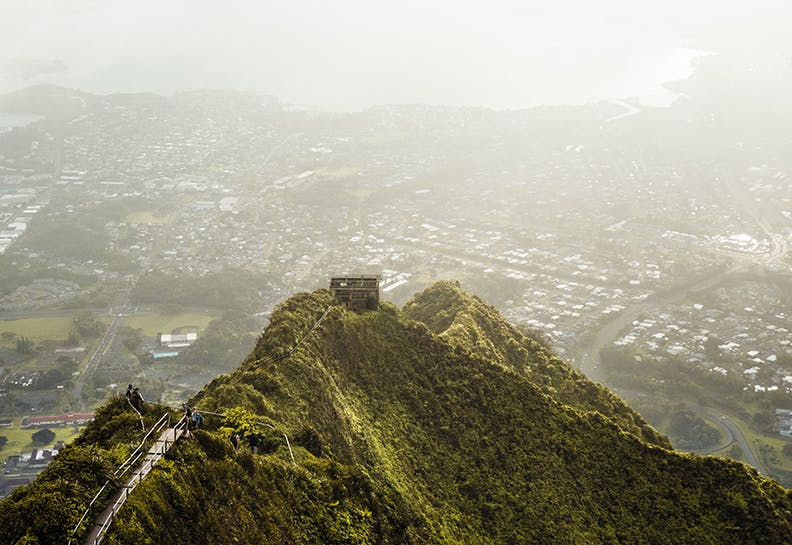
Here is a list of the most dangerous tourist attractions in Hawaii:
1. Kipu Falls
Kipu Falls in one of the most dangerous and deadly places to visit in Hawaii. This breathtaking waterfall has been nicknamed the “Pool of Death.” It has a dangerous reputation for drowning victims. In one year, five people drowned at Kipu Falls. Others have suffered broken bones, rope burns, chest injuries, and perforated eardrums. One person was paralyzed after jumping from Kipu Falls. Locals speculate about what exactly makes the falls so dangerous since there’s nothing immediately threatening about the area. Some think that there is a dangerously powerful whirlpool circulating beneath the falls. Others speculate that there is a Hawaii spirit in the waters, dragging swimmers to their death. If someone jumps too close, they are sucked into the water, only to be found at the bottom of the swimming hole hours later. Hotels and tourist pages are warning visitors away from Kipu Falls.
2. Nakalele Point Blowhole
Nakalele Point Blowhole is a blowhole located in a small cove next to the ocean. Ocean waves often push into the cove, covering the blowhole until the waves recede. Nakalele Point Blowhole is dangerous for three main reasons. First, if a person stands too close to the blowhole when it erupts, they can be sucked into the hole and dragged into the underground ocean cave. Second, powerful, neck-breaking waves often force their way into the cove. If a visitor turns his or her back on the waves, they could be pushed into the blowhole. Third, the blowhole is similar to a geyser in strength and force. The water bursting from the blowhole erupts from the ground and can shoot over 50 feet in the air. Those standing near the blowhole will feel the ground tremble beneath their feet. That being said, if a person were to stand above the blowhole when it erupts, they could suffer from fatal injuries.
3. South Point
South Point is an inviting, beautiful spot where the waves crash against the cliffs. This area is popular for daring cliff jumpers. However, the waves in this area are deadly. The waves are pulled and pushed by the Halaea Current, an underwater riptide named for pulling a Hawaiian chief out to sea. The Halaea Current has been known to drag unsuspecting swimmers and divers under the water, drowning them in the ocean water. Jumpers have also had broken bones and other severe injuries from jumping incorrectly into the water. When visiting South Point, use extreme caution.

4. Sacred Falls
This beautiful hike is so dangerous that the area has been closed. In 1999, a powerful rock slide killed eight hikers and injured 50 others. Before then, there were over 20 accidents where people were either killed or injured. Traveling to Sacred Falls can result in over seven citations due to the dangers of the area. Falling rocks are a near-constant occurrence and the trails are steep and rocky. Traveling to Sacred Falls is not worth the risk.
5. Lumahai
Lumahai is a beautiful, secluded beach often featured on postcards and calendars. It captures the beauty of Hawaii with pristine turquoise waters and beautiful sandy beaches. However, despite the beauty of Lumahai, the locals have nicknamed the beach “Luma-die.” This beach is incredibly dangerous and has been known to drown tourists every few years. The water at Lumahai is prone to powerful waves that wash over the rocks and drag poor swimmers out to sea. Peopleare often lured to walk along the slippery rocks lining the cove. However, these rocks are often swept over by large waves every ten to 15 minutes. Lumahai is a beautiful place to visit and take pictures, but stay out of the water and off the rocks.
A good rule of thumb is to stay away from areas that the locals steer clear of. Staying away from unknown or dangerous areas (regardless of whether the danger is due to crime data or steep cliffs), can help visitors to stay safe. To stay safe while in Hawaii, visitors should steer clear of extremely dangerous locations and should pay close attention to warning signs.
